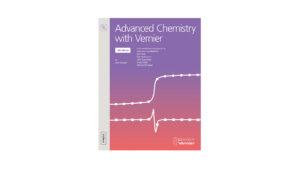Introduction
One type of nuclear reaction is called radioactive decay, in which an unstable isotope of an element changes spontaneously and emits radiation. The mathematical description of this process is shown below.
In this equation, λ is the decay constant, commonly measured in s–1 (or another appropriate unit of reciprocal time) similar to the rate law constant, k, in kinetics analyses. R0 is the activity (rate of decay) at t = 0. The SI unit of activity is the bequerel (Bq), defined as one decay per second. This equation shows that radioactive decay is a first-order kinetic process.
One important measure of the rate at which a radioactive substance decays is called half-life, or t1/2. Half-life is the amount of time needed for one half of a given quantity of a substance to decay. Half-lives as short as 10–6 second and as long as 109 years are common.
In this experiment, you will use a source called an isogenerator to produce a sample of radioactive barium. The isogenerator contains cesium-137, which decays to produce barium-137. The newly made barium nucleus is initially in a long-lived excited state, which eventually decays by emitting a gamma photon and becomes stable. By measuring the decay of a sample of barium-137, you will be able to calculate its half-life.
Follow all local procedures for handling radioactive materials. Follow any special use instructions included with your isogenerator.
Objectives
In this experiment, you will
- Use an isogenerator to produce radioactive barium-137 for analysis.
- Use a radiation counter to measure the decay of a sample of barium-137.
- Calculate the decay constant and half-life of barium-137.
Sensors and Equipment
This experiment features the following sensors and equipment. Additional equipment may be required.
Option 1

Option 2

Correlations
Teaching to an educational standard? This experiment supports the standards below.
- International Baccalaureate (IB) 2025/Chemistry
- Structure 1.2.2—Isotopes are atoms of the same element with different numbers of neutrons.
Ready to Experiment?
Ask an Expert
Get answers to your questions about how to teach this experiment with our support team.
- Call toll-free: 888-837-6437
- Chat with Us
- Email support@vernier.com
Purchase the Lab Book
This experiment is #33 of Advanced Chemistry with Vernier. The experiment in the book includes student instructions as well as instructor information for set up, helpful hints, and sample graphs and data.

